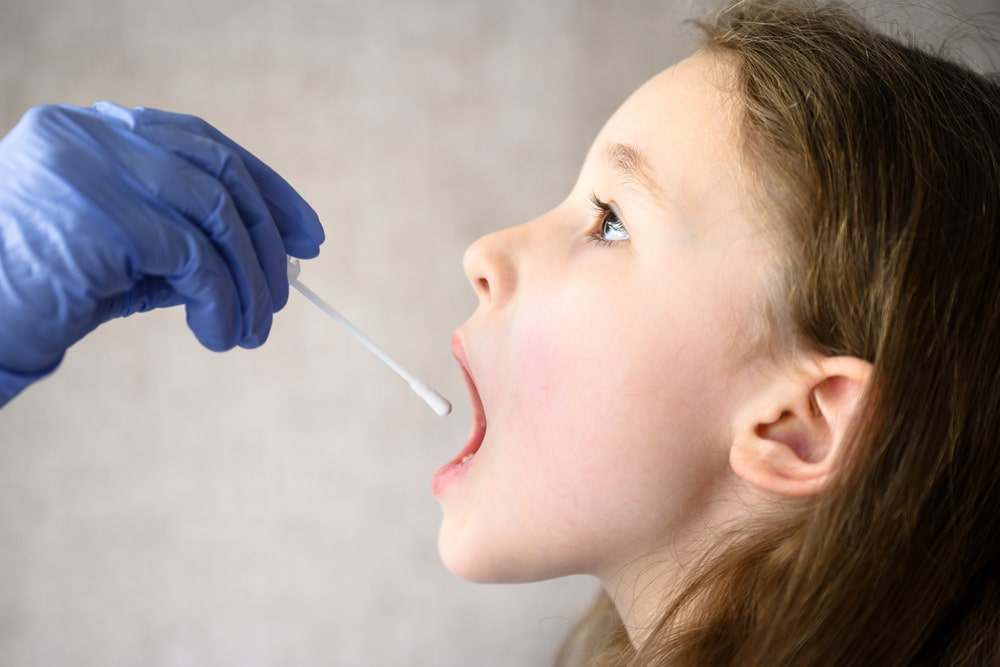Usually, children and infants get sick with COVID-19 more easily, but due to the spread of the omicron strain, minors began to get sick at a record frequency, and the number of hospitalizations also increased. “Hitech” has collected all the important information
Children begin to get sick more often, typical symptoms change, and kids from two to five years old are hit – these are all the facts about the new omicron strain.
Do children get sick with the omicron strain more often or less often?
At the end of December 2021, American doctors surveyed said they were seeing a record increase in the number of sick children, but the vast majority of cases are mild and look like a common cold.
Representatives of countries in South Africa reported an increase in the number of hospitalizations among children in this age group. A similar situation occurred in the UK: doctors published data indicating that more children became ill. At the end of December 2021, the number of hospitalizations was 3.64 per 100,000 children aged 0 to 4, three times more than those aged 5 to 14.
Doctors and representatives from eight children’s hospitals in the US said most of the patients are unvaccinated teenagers. It is noted that in America, children under the age of five cannot be vaccinated.
Children in Russia also began to get sick more often with a new type of coronavirus, after the spread of the omicron strain. The number of minors among all cases increased by 5%. The head of the Ministry of Health, Mikhail Murashko, confirmed that children get sick with the omicron strain 2.5 times more often than other options.
The WHO said that research on the transmission of the omicron strain is still ongoing. But it is already known that those who are not vaccinated are more susceptible to infection.
At the end of December 2021, American doctors surveyed said they were seeing a record increase in the number of sick children, but the vast majority of cases are mild and look like a common cold.
What symptoms appear in children with omicron strain?
Previously, one of the characteristic symptoms of coronavirus was the loss of smell, but this rarely happens with the omicron strain. Therefore, some experts believe that it is precisely because of this that the strain is difficult to identify before analysis.
Omicron has more complex symptoms that mimic colds and flu, doctors say. UK Health officials said most are experiencing headaches, sore throats, nasal congestion and fevers. These symptoms usually last for about three days.
A complete list of symptoms in children: fever, chills, cough, shortness of breath, fatigue, loss of taste or smell, muscle or body aches, headache, sore throat, nasal congestion or runny nose, nausea, diarrhea.
William Schaffner, M.D. from the USA stated that the symptoms of the omicron strain are very similar to delta. Despite this, people with the omicron strain most commonly reported five symptoms: runny nose, headache, fatigue, sneezing, and sore throat.
Do children get sick with the omicron strain more severely than adults?
There is no single answer to this question. Despite this, experts cite statistics as an argument, which show that the high, relative to the delta strain, ability of omicron to spread may depend on the infectivity of the strain or, on its ability to partially escape immunity.
“The more contagious the virus, the more likely it is to spread. The more children who become infected with omicron, the more of them will become seriously ill, ”said Rajeev Fernando, MD and consultant in infectious diseases from FEMA.
Expert opinion on what to do if a child gets sick with the omicron strain?
Pediatrician Fedor Katasonov, who runs a popular telegram channel about children’s health, believes that the omicron strain should be treated in the same way as SARS. Therefore, you need to call a doctor if the temperature rises steadily for three or four days.
Still, according to Katasonov, you need to pay attention to these symptoms – difficulty breathing or a sudden rash. They indicate a non-standard course of the course of the disease, so you should consult a specialist. The decision on hospitalization should be made jointly with the doctor, he emphasizes.
Rospotrebnadzor said that the omicron strain most seriously affects children 2-5 years old. Experts note that in children of this age, the infection may be accompanied by damage to the bronchi and upper respiratory tract. Such symptoms in almost all cases indicate the need for hospitalization.
Rospotrebnadzor said that the omicron strain most seriously affects children 2-5 years old. Experts note that in children of this age, the infection may be accompanied by damage to the bronchi and upper respiratory tract. Such symptoms in almost all cases indicate the need for hospitalization.
What are the dangerous symptoms of the omicron strain in children?
Patty Manning, chief of staff at Cincinnati Children’s Hospital Medical Center, said the problem is not only an immature immune system, but that children are less able to cope with coughs and fevers than adults.
According to pediatrician Anna Levadnaya, during the illness with the omicron strain, a child may develop respiratory and heart failure. These, the expert noted, are the most dangerous symptoms.
They can be identified by shortness of breath, rapid breathing, excessive contraction of the intercostal spaces and hypochondria, as well as by the blueness of the nasolabial triangle.
In this case, babies may stop eating, and older children often complain of chest pain and a feeling of tightness in the chest. You should also pay attention to the change in the color of the skin, nails and lips.
The spread of the omicron strain has made children more vulnerable as they are not vaccinated and can often go out in public without a mask. In Russia, adolescents aged 12 to 17 will only be vaccinated against coronavirus









